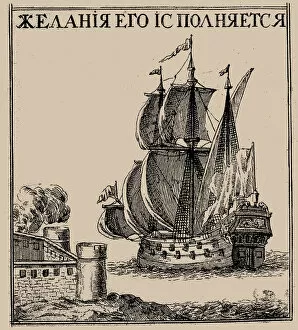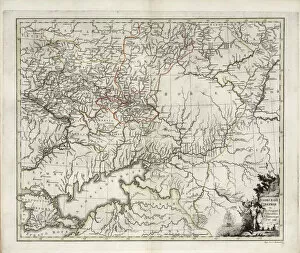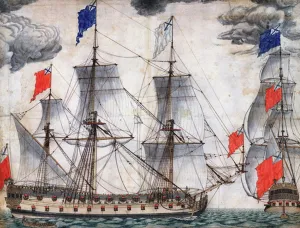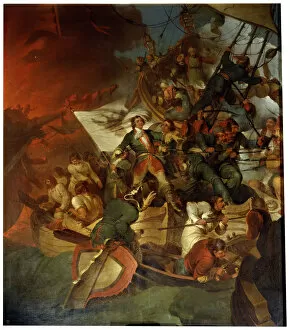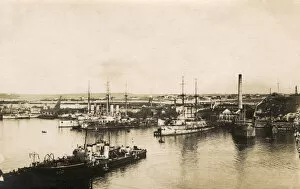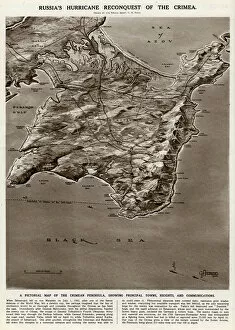Azov Collection
"Exploring the Rich History of Azov: From Bishop Mitrophan's Generous Donation to Peter I's Ambitious Fleet Construction in 1696
All Professionally Made to Order for Quick Shipping
"Exploring the Rich History of Azov: From Bishop Mitrophan's Generous Donation to Peter I's Ambitious Fleet Construction in 1696, to the Magnificent Victory at Perekop in 1736" In the late 17th century, Bishop Mitrophan of Voronezh made a significant contribution towards the construction of the Azov fleet. This act of generosity paved the way for future triumphs and laid the foundation for what would become an impressive naval force. One such achievement was witnessed in 1699 when an engraving depicted the mighty Azov Fleet sailing with determination and purpose. The image captured their strength and unwavering commitment to protecting Russian interests on these treacherous waters. The Krepost, a formidable Russian ship of the line built around 1700 by Adriaan Schoonebeek, showcased both craftsmanship and power. Its presence symbolized Russia's growing influence as it sailed through turbulent waves towards victory. A general map from 1782 illustrated how vast and expansive Azov Governorate had become over time. Ivan Islenyev meticulously crafted this map, showcasing not only its geographical expanse but also hinting at its strategic importance within Russia. The flagship Goto Predestinatsia (The Providence of God), constructed by none other than Peter the Great himself at Voronezh in 1700, stood tall as a testament to his vision and ambition. It served as a constant reminder that greatness could be achieved through dedication and perseverance. During Peter's reign, an imperial regimental flag was designed to represent unity among soldiers fighting under his command. Created by Flags, Banners, and Standards artists circa 1700; it embodied loyalty while instilling pride within every soldier who fought under its colors. One cannot overlook Elias Baeck's artistic depiction capturing Russia's magnificent victory at Perekop on May 20th, 1736.



